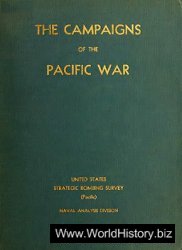The Eisenhower administration had opposed the peace
settlement at Geneva in 1954, which divided Vietnam
temporarily into two separate regroupment zones, specifically
because the provision for future national elections
opened up the possibility of placing the entire country
under Communist rule. But President Eisenhower had
been unwilling to introduce U.S. military forces to continue
the conflict without the full support of the British
and the French, who preferred to seek a negotiated settlement.
In the end, Washington promised not to break
the provisions of the agreement but refused to commit itself
to the results.
During the next several months, the United States began
to provide aid to a new government in South Vietnam.
Under the leadership of the anti-Communist politician
Ngo Dinh Diem, the Saigon regime began to root
out dissidents while refusing to hold the national elections
called for by the Geneva Accords. It was widely anticipated,
even in Washington, that the Communists
would win such elections. In 1959, Ho Chi Minh, despairing
of the peaceful unification of the country under
Communist rule, returned to a policy of revolutionary
war in the south.
By 1963, South Vietnam was on the verge of collapse.
Diem’s autocratic methods and inattention to severe economic
inequality had alienated much of the population,
and revolutionary forces, popularly known as the Viet
Cong (Vietnamese Communists), expanded their influence
throughout much of the country. In the fall of 1963,
with the approval of the Kennedy administration, senior
military officers overthrew the Diem regime. But factionalism
kept the new military leadership from reinvigorating
the struggle against the insurgent forces, and by early
1965, the Viet Cong, their ranks now swelled by military
units infiltrating from North Vietnam, were on the verge
of seizing control of the entire country. In desperation,
President Lyndon Johnson (1908–1973) decided to send
U.S. combat troops to South Vietnam to prevent a total
defeat for the anti-Communist government in Saigon.
Chinese leaders observed the gradual escalation of
the conflict in South Vietnam with mixed feelings. They
were undoubtedly pleased to have a firm Communist ally
—and indeed one that had in so many ways followed the
path of Mao Zedong—just beyond their southern frontier.
Yet they could not relish the possibility that renewed
bloodshed in South Vietnam might enmesh China in a
new conflict with the United States. Nor could they have
welcomed the specter of a powerful and ambitious united
Vietnam that might wish to extend its influence throughout
mainland Southeast Asia, which Beijing considered
its own backyard.
Chinese leaders therefore tiptoed delicately through
the minefield of the Indochina conflict, seeking to maintain
good relations with their ally in Hanoi while avoiding
a confrontation with the United States. As the war
escalated in 1964 and 1965, Beijing publicly announced
that the Chinese people would give their full support to
their fraternal comrades seeking national liberation in
South Vietnam but privately assured Washington that
China would not directly enter the conflict unless U.S.
forces threatened its southern border. Beijing also refused
to cooperate fully with Moscow in shipping Soviet goods
to North Vietnam through Chinese territory.
Despite its dismay at the lack of full support from
China, the Communist government in North Vietnam
responded to U.S. escalation by infiltrating more of its
own regular force troops into the south, and by 1968, the
war was a virtual stalemate. The Communists were not
strong enough to overthrow the Saigon regime, whose
weakness was shielded by the presence of half a million
U.S. troops, but President Johnson was reluctant to engage
in all-out war on North Vietnam for fear of provoking
a global nuclear conflict. In the fall, after the Communist-
led Tet offensive aroused heightened antiwar
protests in the United States, peace negotiations began
in Paris.
Richard Nixon (1913–1994) came into the White
House in 1969 on a pledge to bring an honorable end to
the Vietnam War. With U.S. public opinion sharply divided
on the issue, he began to withdraw U.S. troops
while continuing to hold peace talks in Paris. But the
centerpiece of his strategy was to improve relations with
China and thus undercut Chinese support for the North
Vietnamese war effort. During the 1960s, relations between
Moscow and Beijing had reached a point of extreme
tension, and thousands of troops were stationed on
both sides of their long common frontier. To intimidate
their Communist rivals, Soviet sources dropped the hint
that they might decide to launch a preemptive strike to
destroy Chinese nuclear facilities in Xinjiang. Sensing
an opportunity to split the one-time allies, Nixon sent his
emissary Henry Kissinger on a secret trip to China. Responding
to the latter’s assurances that the United States
was determined to withdraw from Indochina and hoped
to improve relations with the mainland regime, Chinese
leaders invited President Nixon to visit China in
early 1972.
Incensed at the apparent betrayal by their close allies,
in January 1973 North Vietnamese leaders signed a peace
treaty in Paris calling for the removal of all U.S. forces
from South Vietnam. In return, the Communists agreed
to seek a political settlement of their differences with
the Saigon regime. But negotiations between north and
south over the political settlement soon broke down, and
in early 1975, convinced that Washington would not intervene,
the Communists resumed the offensive. At the
end of April, under a massive assault by North Vietnamese
military forces, the South Vietnamese government
surrendered. A year later, the country was unified under
Communist rule.
The Communist victory in Vietnam was a humiliation
for the United States, but its strategic impact was limited
because of the new relationship with China. During the
next decade, Sino-American relations continued to improve.
In 1979, diplomatic ties were established between
the two countries under an arrangement whereby the
United States renounced its mutual security treaty with
the Republic of China in return for a pledge from China
to seek reunification with Taiwan by peaceful means. By
the end of the 1970s, China and the United States had
forged a “strategic relationship” in which each would cooperate
with the other against the common threat of
Soviet “hegemonism” (as China described Soviet policy)
in Asia.




 World History
World History









